Goerdeler made numerous attempts to obtain an interview with Zeitzler. Beck and Stauffenberg considered these efforts useless. Choltitz, to whom Goerdeler had been introduced in the autumn of 1943 through the mediation of Choltitz’s cousin Baron Palombini, apparently promised to arrange that Goerdeler and Zeitzler should meet but then decided against it. Ritter, ‘Goerdeler’, p. 383.
Generaloberst Friedrich Fromm (8.10.1888–12.3.1945), Chief of Army Armaments and C-in-C Ersatzheer from the outbreak of war, knew of the coup plot by his Chief of Staff, Stauffenberg, but refused any involvement once he knew that Hitler had survived the assassination attempt. On the early morning of 21.7.1944 he had the four conspirators Stauffenberg, von Haeften, Olbricht and von Quirnheim shot in the Bendler-Strasse courtyard. Fromm himself was executed by shooting at Brandenburg-Görden Penitentiary on 12.3.1945. There is a very recent, monumental biography on Fromm: Kroener, ‘Fromm’.
After the failure of the coup, Fromm gave Beck the oportunity to kill himself. Beck made two attempts, both of which failed. Fromm then ordered that he be ‘put out of his misery’, which was probably carried out by a Feldwebel. Kroener, ‘Fromm’, pp. 702–8.
Himmler, nominated Fromm’s successor on 20.7.1944, made his appearance at the Bendler Block for the first time on 22.7.1944. Choltitz’s account must have been obtained from one of two other SS-Führer. Just after midnight on 21.7.1944 SS-Sturmbannführer Otto Skorzeny (12.6.1908–5.7.1975) arrived at the Bendler Block with a company of SS to support the Wachbataillon under Major Ernst-Otto Remer (8.8.1912–5.10.1997). SS-Obergruppenführer and General der Polizei Dr Ernst Kaltenbrunner (4.10.1903–15.10.1946), from 30.1.1943 Chief of RSHA and SD, had arrived there shortly before. Kroener, ‘Fromm’, p. 708f.
Manstein was certainly an independent thinker, but he had never been prepared to become involved politically against Hitler and had developed no major political ideology. He satisfied himself with the hope of achieving a ‘stand-off’ with the Russians on the Eastern Front. There is no academic biography. For general reading see Syring, ‘Erich von Manstein’.
The poorly prepared Kapp putsch of 13–17.3.1920 cannot be compared to the coup attempt of 20.7.1944 because of the difference in the prevailing conditions. There is comprehensive documentation on the former, ‘Der Kapp-Lüttwitz-Ludendorff Putsch. Dokumente’. From the older existing literature, the best account is Erger, ‘Kapp-Lüttwitz Putsch’.
There is no doubt that the conspirators attempted to isolate the communications at FHQ Wolfsschanze, but this was frustrated by the complexity of the installation. The failure to shut down the distribution network run by the Reichspost was caused mainly by the refusal of Telegraphy Senior Inspector Senor to cooperate. Peter Hoffmann, ‘Staatsstreich’, pp. 415–28, 504, 508–11.
Eberbach was referring here to the brief conversation he had on 17.7.1944 at HQ, Pz.Gr. West shortly before Rommel was seriously wounded.
Genertalleutnant Alfred Gause (14.2.1896–30.9.1967) was from September 1941 to 7.5.1943 (with a short break) Chief of Staff, Pz.Gr./Pz.Armee/Heeresgr.Afrika, from 15.6.1944–10.9.1944 Chief of Staff, Pz.Gr. West and 5.Pz.Armee.
Meant here is Oberstleutnant (from 1.8.1944 Oberst) Franz Herber, Chief, Abt.Ib, General Army Bureau, who towards 2100hrs appointed himself leader of the counter-coup at the Bendler Block and, together with other officers of the General Army Bureau, helped put down the Stauffenberg putsch and released Fromm. Kroener, ‘Fromm’, p. 697.
The meeting of Geyr, Eberbach and Stauffenberg probably took place in mid-July 1941 when Stauffenberg visited the XXIV.Pz.Korps advanced command post in the area between Orsha and Smolensk. At that time Eberbach was CO, 5.Pz.Brigade/4.Pz.Div./XXIV.Pz.Korps. Leo Reichsfreiherr Geyr von Schweppenburg (2.3.1896–27.1.1974) was a friend of the Stauffenberg family. From 1922 to 1925 he had been Chief, 4.Squadron/18.Reiter-Reg. at Bad Cannstadt, and Claus’s eldest brother Alexander von Stauffenberg served under him there. Peter Hoffmann, ‘Stauffenberg’, pp. 49, 135f, 223. For Stauffenberg’s later attempts to recruit Geyr to the Resistance see note 387 387 In September 1942, Stauffenberg visited General der Infanterie Georg von Sodenstern (15.11.1889–20.7.1955), Chief of General Staff, Army Group B, and the Cmmdg Gen. XXXX.Pz.Korps, Leo Freiherr Geyr von Schweppenburg, and attempted without success to recruit them for the planned assassination of Hitler. On 26.1.1943 he attempted to persuade Generalfeldmarschall Erich von Manstein to head a coup d’état, which he declined. One cannot simply say that Manstein was the only field marshal ‘who had not gone along with it’. Broich repeats here Stauffenberg’s impressions on the field marshals as a whole. Stauffenberg could only infer from Henning von Tresckow’s soundings that Feldmarschall von Kluge was not opposed to a conspiracy but did not want to be part of it. At that time Stauffenberg could only have been certain of the support of von Witzleben. After the conversation with von Manstein, Stauffenberg remarked, ‘These guys are either shitting their pants or have straw heads, and don’t want it.’ Peter Hoffmann, ‘Stauffenberg’, pp. 250, 252f, 262f, 265–8. Broich was of the opinion in October 1943, from a conversation with Bassenge, ‘that all had said they were ready’, but none wanted to lead it. ‘Manstein is the only one who said… the time is not yet ripe, and he rejected it absolutely, and it is madness.’ SRGG 506, 24.10.1943, TNA, WO 208/4166.
above.
Eberbach was confusing two events here – possibly on the basis of misleading National Socialist press reporting in which the conspirators were blamed for the destruction of Army Group Centre. One event concerns General der Artillerie Fritz Lindemann (11.4.1894–22.9.1944), from 1.10.1943 General der Artillerie at Chief of Army Armaments and CO, Ersatzheer. He was involved in planning the coup, was arrested on 3.9.1944 and died 22.9.1944 as the result of a bullet wound to the stomach inflicted during his arrest. Mühlen, ‘Sie gaben ihr Leben’. The second event concerned Generalmajor Gerhard Lindemann (2.8.1896–28.4.1994), from end May 1944 CO, 361.Inf.Div., captured by Soviets 22.7.1944 on central section of Eastern Front. Together with Generalleutnant Eberhard von Kurowski (10.9.1985–11.9.1957) – from 1.6.1943 CO, 110.Inf.Div., also captured by Soviets in July 1944 – on 14.8.1944 he broadcast on the radio station ‘Freies Deutschland’ a message inciting troops of Army Group Centre to lay down their arms. ‘Tätigkeitsbericht Schmundt’, p. 201. Lindeman and Kurowski also signed the declaration of the 50 generals of 8.12.1944.
Major Joachim Kuhn (b. 2.8.1913), under Stieff at Organisations-Abt., Army General Staff, was active in procuring explosives for an assassination attempt in 1943. From 22.6.1944 he was 1a, 28.Jäger-Div. A few days after 20.7.1944, his divisional commander Gustav Hostermann von Ziehlberg (10.12.1898–2.2.1945) received orders to place Kuhn under arrest and bring him to Berlin. Von Ziehlberg advised him of this and offered Kuhn the oportunity to avoid arrest by shooting himself. Instead, Kuhn crossed the Soviet line on 27 July. Von Ziehlberg was then court-martialled and sentenced to nine months’ detention to be served at the front. Following a finding of guilt in a second trial in which he was charged with ‘premeditated disobedience to an order in the face of the enemy’, he was sentenced to death and executed by firing squad on 2.2.1945 at Berlin-Spandau. For Kuhn see esp. ‘Neue Quellen zur Geschichte des 20.7.1944’ and ‘Tätigskeitsbericht Schmundt’, pp. 181, 184, 287 and 297.
Читать дальше

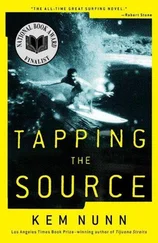
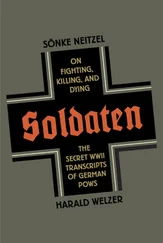

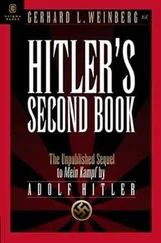
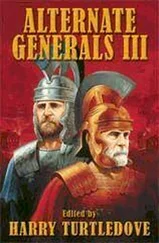
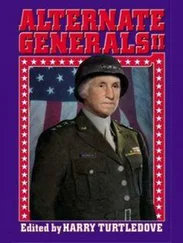

![Traudl Junge - Hitler's Last Secretary - A Firsthand Account of Life with Hitler [aka Until the Final Hour]](/books/416681/traudl-junge-hitler-s-last-secretary-a-firsthand-thumb.webp)



